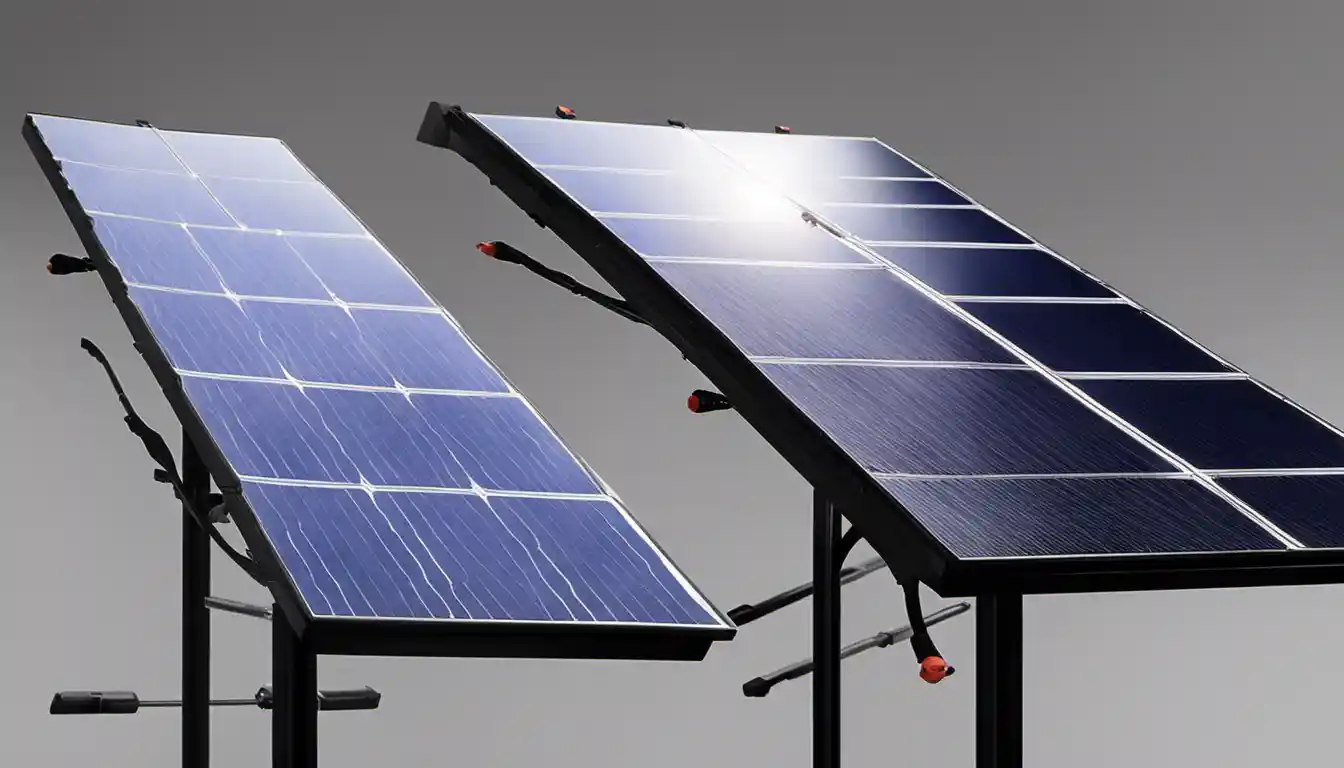Understanding Monocrystalline Solar Panels
Mono solar panels, also known as Monocrystalline solar panels, are made from a single pure crystal structure, while Mono PERC (Passivated Emitter Rear Cell) solar panels are an advanced technology that adds a passivation layer on the back of the monocrystalline cells, which increases efficiency and power output. Thus, the main difference is that Mono PERC panels are more efficient and can produce more energy than traditional monocrystalline panels.
Unpacking Mono PERC Solar Panels
Mono PERC solar panels or Monocrystalline Passivated Emitter Rear Cell solar panels are the evolved cousins of the traditional monocrystalline panels. A PERC solar cell is designed to capture solar photons or light particles more efficiently due to a passivation layer on the cell’s backside. This extra layer acts as a mirror, reflecting light back into the cell, which otherwise would be lost, augmenting cell efficiency and power output.
Breaking Down the Differences – Mono vs Mono Perc Solar Panels
Comparison 1: Efficiency

When evaluating the difference between mono and mono PERC solar panels, the first point for comparison is their efficiency. Mono solar panels typically have an efficiency approaching 20%, a respectable number indeed. But here’s where mono PERC solar panels take the lead. Thanks to the added passivation layer, they can reach efficiencies of up to 22-23%, proving to be a more efficient energy solution.
Comparison 2: Cost
Cost always emerges as a key factor in solar panels discussions. Traditional monocrystalline panels, while efficient, have been known to be on the expensive side. However, despite the higher efficiencies of mono PERC solar panels, they aren’t dramatically more expensive than their monocrystalline counterparts. The slightly higher cost is typically offset by the additional power output and efficiency, presenting a higher return on investment over time.
Comparison 3: Space Required
Due to their elevated efficiency, mono PERC solar panels can generate the same amount of power in less space than monocrystalline panels. This makes them the preferred choice for homeowners with limited roof space or businesses wishing to maximize their power output in a small area.
Comparison 4: Temperature
One aspect that illuminates the difference between mono and mono PERC solar panels quite vividly is their temperature tolerance. In conditions of high heat or low light, mono PERC panels outshine traditional monocrystalline panels. This is due to their ability to capture reflected light, aiding in enhanced performance even under less ideal conditions.
Pros and Cons of Monocrystalline Solar Panels

Advantages of Monocrystalline Solar Panels
Monocrystalline solar panels offer several advantages. For starters, their single-crystal structure lends them a sleek, uniform aesthetic appeal. Moreover, they are known for their high power output and longevity, promising a robust and long-term solar solution.
Disadvantages of Monocrystalline Solar Panels
Despite their merits, monocrystalline solar panels do have a few drawbacks. They take up more space as compared to PERC panels for the same output and can become less efficient in high temperatures or low light.
Pros and Cons of Mono PERC Solar Panels
Advantages of Mono PERC Solar Panels

Mono PERC solar panels add value to their monocrystalline roots with significant upgrades. They offer higher efficiency, need less space, perform better under various light conditions, and potentially provide a better return on investment.
Disadvantages of Mono PERC Solar Panels
As for the cons, the higher initial cost could be a barrier for some users. However, it’s prudent to evaluate this against the higher performance in the long run.
Commercial and Utility-Scale Projects: Choosing Between Monocrystalline and Mono PERC Solar Panels
The choice between mono and mono PERC solar panels for commercial and utility-scale projects hinges heavily on a variety of factors such as available space, budget, climate and light exposure etc. Mono PERC panels, with their high efficiencies and enhanced performance, can provide more bang for your buck, especially in scenarios where space is a constraint or there’s a requirement for high power output.
If you wish to dig deeper into the types of solar panels, visit our comprehensive guide on various kinds of solar panels.
Frequently Asked Questions (FAQs) About Mono and Mono PERC Solar Panels
This in-depth comparison would not be complete without addressing some common frequently asked questions regarding mono and mono perc solar panels. Stay tuned for the coming section where I’ll be delving into these queries. Dive in, as the solar panels’ world is as enlightening as it is electrifying!



